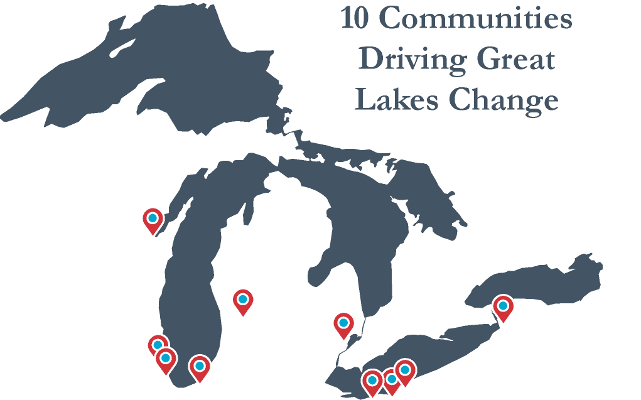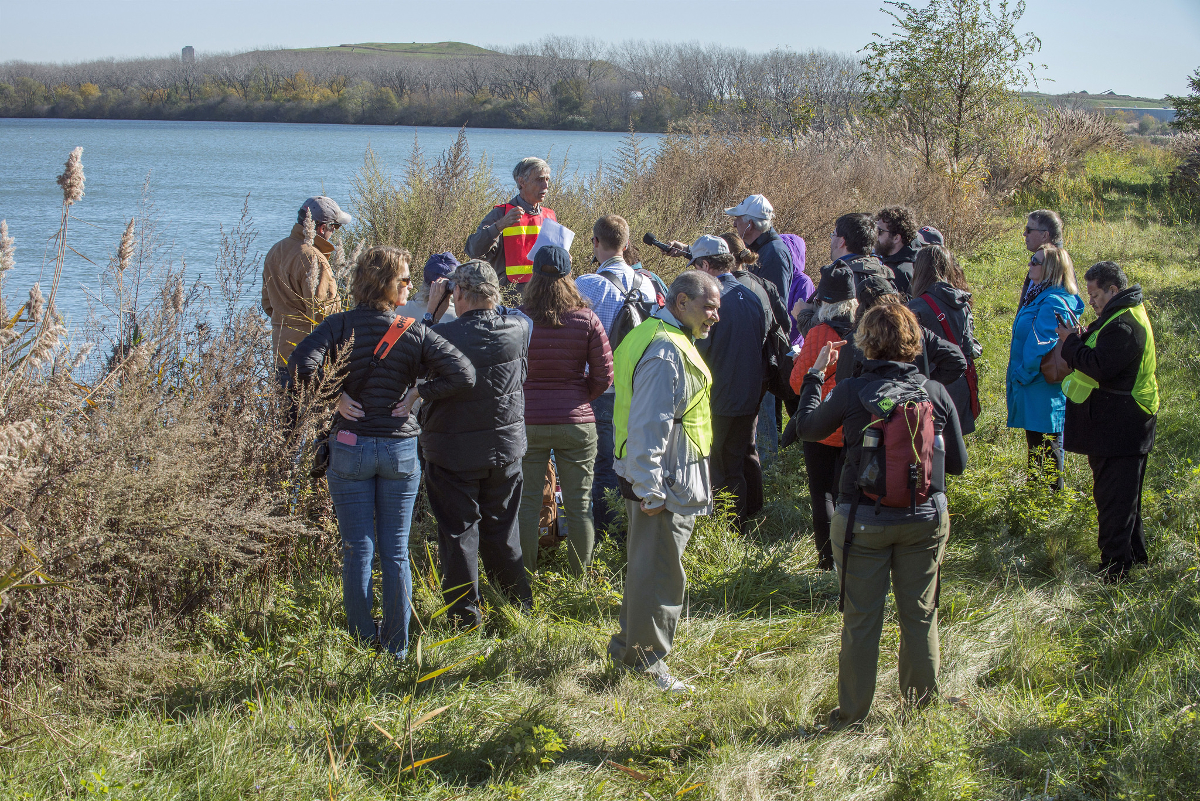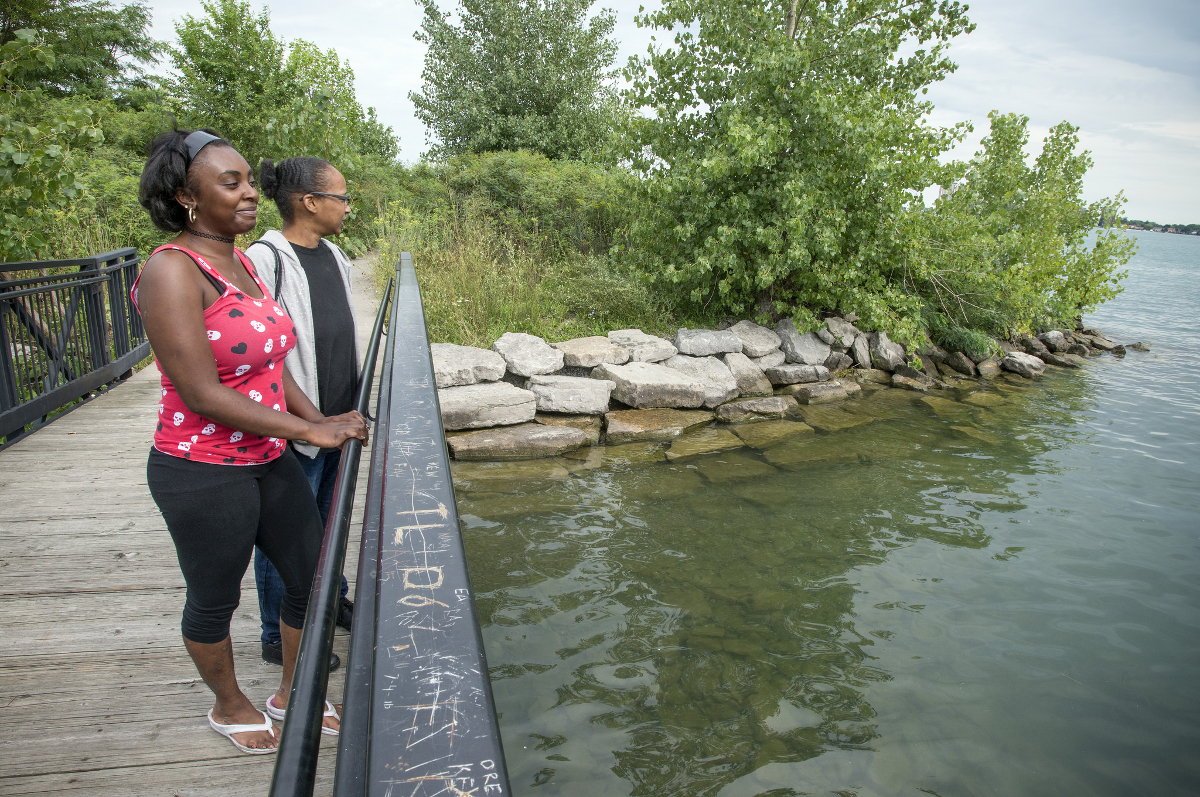
Something magical happens when the right people get together. Ideas flow, plans are created, and the next thing you know, great things are happening for the Great Lakes.
Communities across the region are filled with this kind of energy and action. Here are some of the conversations we were privileged to be part of in 2017:

Green Bay, Wisconsin: Reducing nutrient pollution
Lake Michigan’s Green Bay suffers a large dead zone each year, threatening human health, fish and wildlife. But local farmers, businesses, researchers, nonprofits, and local governments are working to improve water quality and curb runoff pollution. This year, we hosted a series of roundtables connecting these local stakeholders to develop a shared vision for a clean Green Bay. Next year, the relationships and ideas they’ve built will help them create a plan of action to improve water quality in the bay and the Lower Fox River, which feeds it.
Glencoe, Illinois & Euclid, Ohio: Caring for ravines
Work that started in Illinois is sparking conversations all the way to Ohio! A growing number of Lake Michigan communities have been working to protect their ravines. This year, two new communities joined the conversation. In Glencoe, Illinois, we teamed up with the village’s Sustainability Task Force to host a workshop that brought ravine homeowners together and connected them with tools to care for their ravines. And the Lake Michigan conversations are inspiring communities on Lake Erie. In Euclid, Ohio, we participated in two locally-driven workshops that brought together ravine residents and municipal leaders. Ravines are a globally rare habitat – and when they’re healthy, they filter and cleanse water flowing into the lakes.

Chicago, Illinois: Envisioning cleaner water & healthier neighborhoods
Chicago’s Southeast Side is home to several Lake Michigan beaches and the Calumet River, which flows into the lake. The river and nearby communities have suffered from a legacy of industrial pollution. This summer we spent time listening to community members who have exciting ideas about how improvements to their local beaches, parks and the river could enhance their quality of life and attract people to their neighborhoods. Next summer, community members will create arts, culture and recreation pop-up events along the river focus to inspire new thinking about the area and spur long-term investments. We can’t wait to see what they come up with!
Michigan City, Indiana & Grand Rapids, Michigan: Partnering on stormwater management
Sometimes talking with someone outside of your region makes all the difference. Last year, we connected city leaders from Michigan City, Indiana with leaders in Grand Rapids, Michigan. We thought that if they got to know each other, Michigan City could get ideas to apply at home from Grand Rapids’ nation-leading efforts to clean up their local waterways. It was the start of a beautiful friendship. Now Michigan City and the West Michigan Environmental Action Council, a Grand Rapids-based group, are partnering to develop a locally-informed Green Infrastructure Stormwater Calculator. The calculator will help Michigan City better plan for natural stormwater management to keep pollutants out of Lake Michigan.

Detroit, Michigan: Connecting neighborhoods to the Detroit River
Detroit is experiencing a great rebirth. That includes a fresh focus on one of the city’s greatest resources: the Detroit River, which flows into Lake Erie. This year we concentrated on the Conner Creek Greenway, an 8.5 mile trail that connects Eastside communities to the river. We hosted a series of workshops for residents and community organizations to envision a new future for the greenway. The takeaway? Green infrastructure could help reduce neighborhood flooding, provide safer biking and walking pathways, and lessen overflows that pollute the river during heavy rains. Next step: work with community members to choose sites and design demonstration projects that can start making their vision a reality.
Cleveland & Lorain, Ohio: Listening to local needs
All too often, the mainstream environmental movement fails to include communities of color in our vision for the future and our work to get there. But we know that the health of the Great Lakes depends on the people who live here, so we’re working to understand and advance the priorities of the communities in which we work. In Cleveland – where the majority of residents are black – and Lorain, Ohio – which has one of Ohio’s largest Latino populations – we worked with local partners to hold a series of community conversations. We heard from adult and youth residents of color who educated us about their communities, priorities, and relationship to Lake Erie. They’re changing the way we think about our work.
Buffalo, New York: Mapping ideas for Western New York’s waters
A casual conversation can be the start of something big. In Buffalo, New York, we invited people who care about Lake Erie to get to know each other over a drink and a bite to eat. Throughout the event, attendees put dots and made notes on a map: Where do they connect with the water? Where did something worry them? Where did something excite them? Where did they have an idea for a project they wanted to work on? Soon the map of the Lake Erie and Niagara River watersheds were dotted with color and ideas. Next up: turn all that energy and into action for the lake. And build on the new relationships that are being forged.
